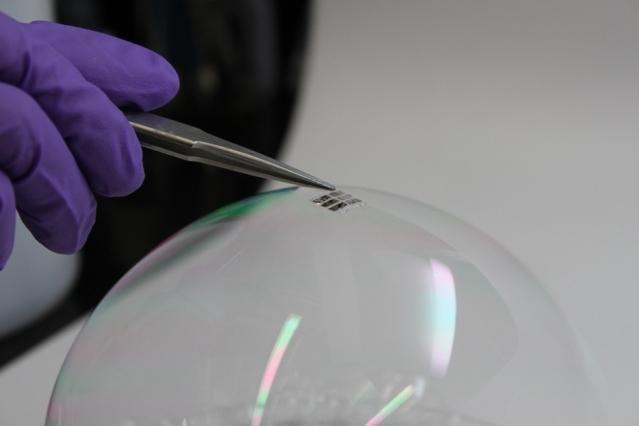When you drive down the street and look up at all the solar panels that are on your neighbors rooftops, you may wonder what exactly they are made of and how they work. Over the years the technology and methods of installations for solar panels have allowed production and costs to be more efficient. Today, researchers from the Massachusetts Institute of Technology (MIT) are looking to evolve the solar industry even further by developing ultrathin, flexible photovoltaic cells.
Many of the photovoltaic solar arrays that you can find on the tops of rooftops are encased by glass. The glass is used as a protective layer that will allow the solar rays to pass through the arrays. The photons from the solar rays release electrons in the materials inside of the panels. The free electrons are then channeled through a current to produce electricity.
The researchers at MIT are looking for a new way to produce solar cells that will allow for more flexibility at the same time, remaining durable and efficient. What they have come up with is a cell that is a little bit thicker than the size of a hair that can be placed on almost any surface. The thin cells are capable of producing up to six watts of power per gram.
The size and flexibility of the cells will allow them to be placed on most surfaces without harming the structures of the cells. This can lead to solar energy being utilized on small technology devices such as cell phones and laptops. They can be incorporated into clothing that can be transferred into a small storage device to be used anytime.
Sol-Up has a mission to make Las Vegas the solar capital of the world. We fight for the rights of all solar customers in the valley as well as the state. For more information and to start your journey to solar, visit our website or call us at 702-586-9800.

